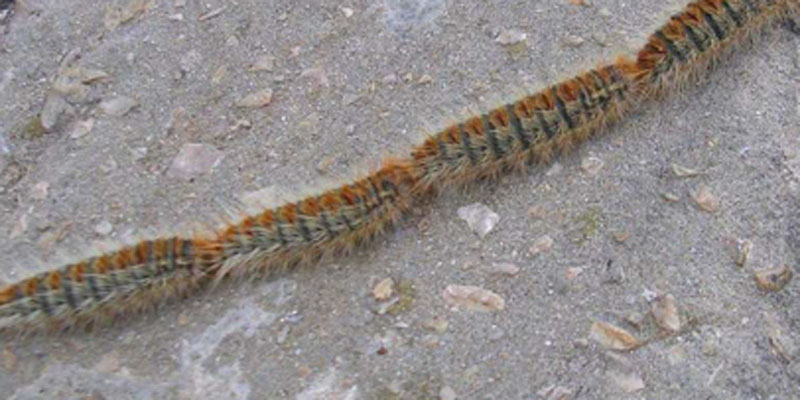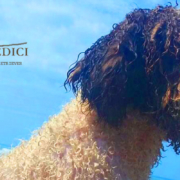Table of Contents
The processionary moth
The processionary moth is an insect which as an adult becomes a nocturnal butterfly, the famous moths. They move in rows across the ground up the trees where they form their nests.
The name is due to the typical movement in a line, like a procession.
Processionary moth nests are white hanks that we often see on pine trees and from which it is difficult to free themselves.
Their activity begins in March and mostly at night, when they reach the ground and bury themselves.
In July and August, when the temperature is higher, it is very easy to encounter them. In this season, when temperatures are high, they come out of the ground and with their typical single file movement climb up into the trees. Mainly pines, but not only.
The processionary moth is dangerous for all animals and also for humans. The stinging hairs of the processionary moth cause severe inflammation in contact areas.
The processionary moth and the dog
The matter becomes much more complicated when it comes to our four-legged friends. If a dog comes into contact with them, it is because it sniffs or tries to ingest these insects.
The areas that typically affect dogs are the mouth and nose. Two extremely sensitive areas that can have fatal consequences.
The tongue swells exaggeratedly, even to the point of asphyxiation. Salivation becomes exaggerated.
Stinging hairs can reach the oesophagus. Depending on the extent of the contact, the dog shows a whole series of symptoms, from exhaustion to fever, lack of appetite to diarrhoea.
If you notice the contact immediately, you should wash the affected area with plenty of water.
This will not be easy as the dog will be in great pain and will not be very willing.
If possible, the affected area should not be extended, and the oral cavity should be kept clean.
Veterinary care is urgently needed.
The danger of the hairy bristles of these caterpillars is also very high for humans and children in particular. The consequences always depend on the affected areas. Eyes, mouth and respiratory tracts also lead to serious consequences for humans.
Where and when we find the processionary moth
Getting rid of these insects once they are established near your home is not easy. It is the presence mainly in pines and pine forests that will make them difficult to eradicate. With great care and in the winter period the branches containing the nests must be cut and burnt.
From March to October it is possible to find these insects. In the presence of pine trees, but above all their nests are easy to spot.
It is the climatic conditions that favour the spread of these insects.
In Florence in March 2017 the problem had reached alert levels. The municipalities in the surrounding areas also intervened with extraordinary plans to rid the city of a veritable processionary moth invasion. It had already happened in October 2015.
A proliferation that also involved other municipalities in Emilia Romagna, Lombardy, Umbria, Veneto, Liguria and Trentino in the same period. A bit of all of northern Italy and part of the centre.
We always hope that our Lagottos do not have to experience this kind of thing. So much depends on us and our behaviour.










Leave a Reply
Want to join the discussion?Feel free to contribute!